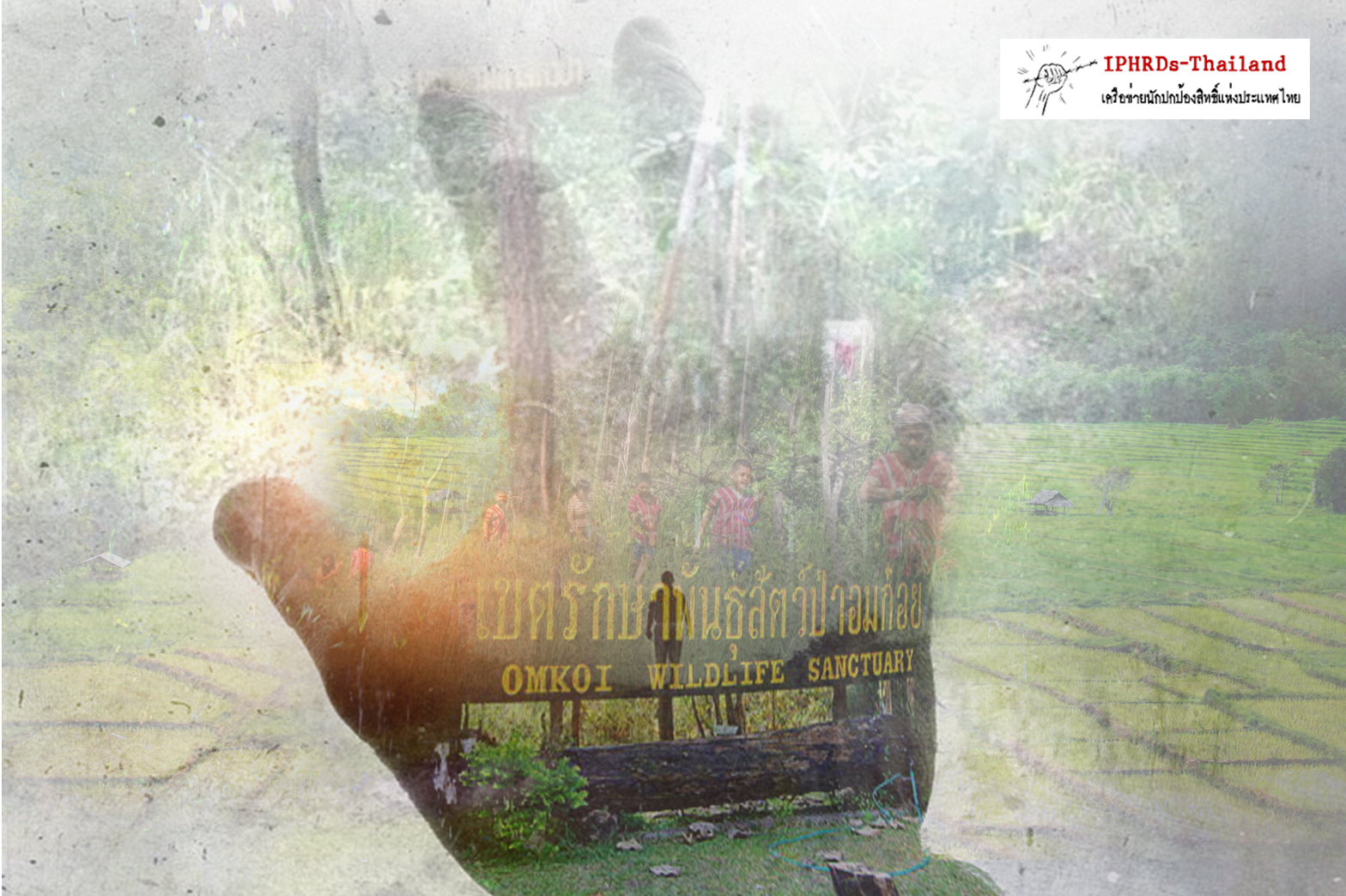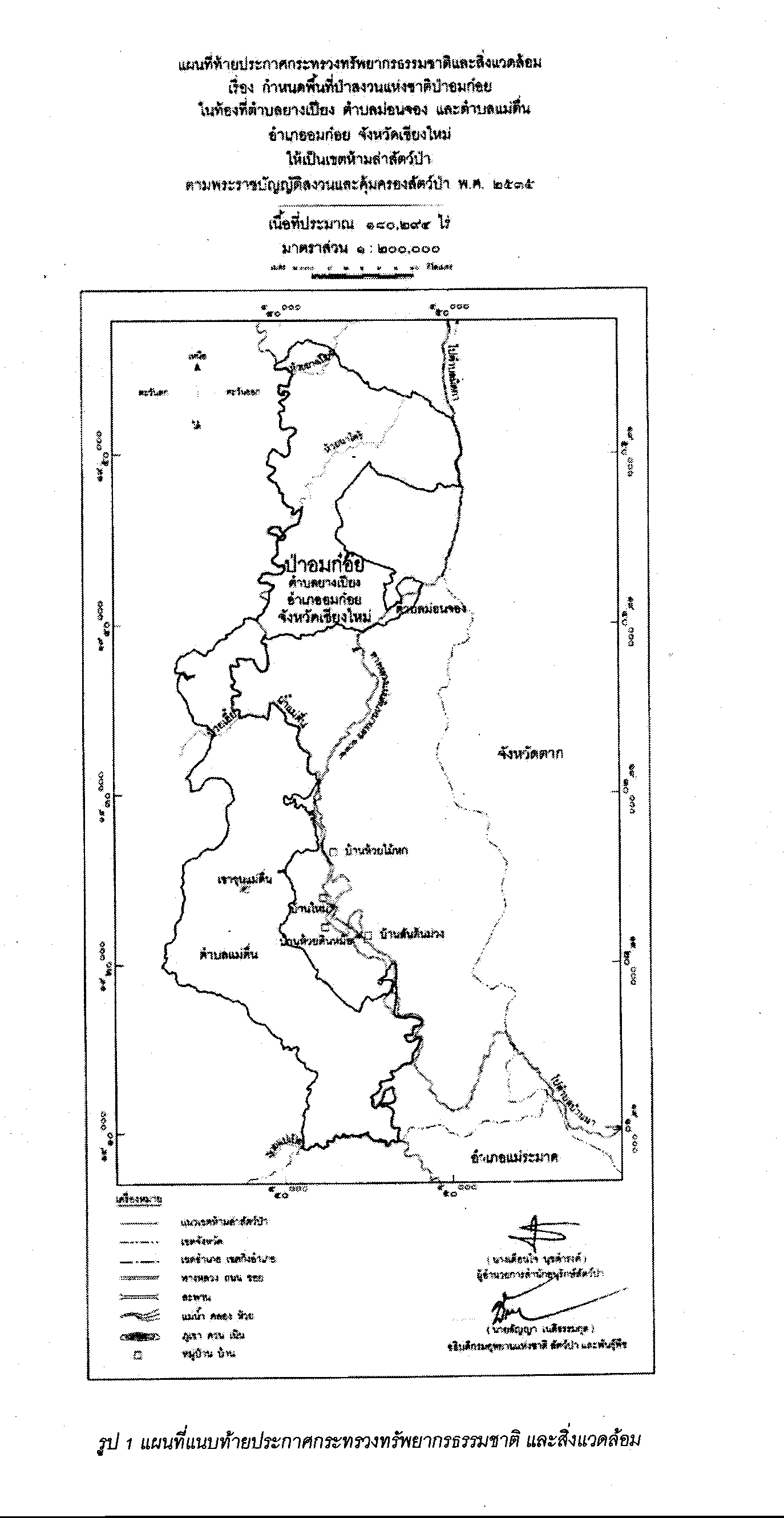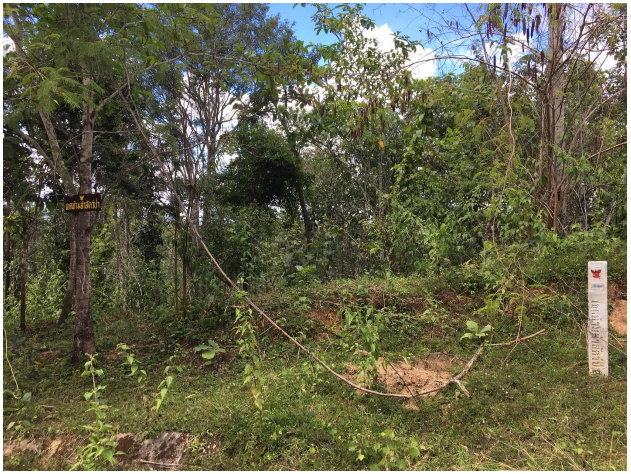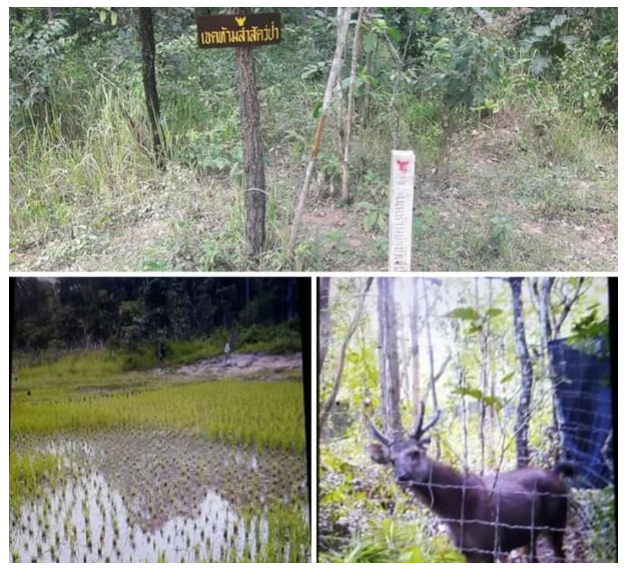Impacts from no hunting zone declaration Nanthaburi No Hunting Zone, Omkoi district, Chiang Mai province

The Ministry of Natural Resources and Environment declared the area of Yang Piang, Mon Chong and Mae Tuen Sub-district, Omkoi District, Chiang Mai Province to be a new no-hunting zone on 7 December 2016 and was put in the Government Gazette on 10 February 2017. The land area is approximately 180,249 rai. 416 species of wild animals are listed and not allowed to hunt.
Later, wild animals were brought from different wildlife breeding stations and released in the area. This has caused problems to villagers as wild animals destroy and eat their farm products.
In addition, villagers are also concerned about the impact to their traditional lifestyles as their rights to use and access to natural resources may be restricted. Villagers confirmed that they have never agreed with this action to be operation in their area. Besides, they have also heard that the government is trying to extend more no hunting zone approximately 68,775 rai.
Background
Mr Thanya Netithamakul, Director-General of the Department of National Parks, Wildlife and Plants Conservation, gave an interview to the media on December 27, 2018 about the idea to increase more protected areas that Thailand, out of 323 million rai, currently has a total forest area of 102.3 million rai. Of these, protected areas which are under the responsibility of the DNP are 73.6 million rai. Protected areas include national parks, Wildlife sanctuary, No-hunting area, Botanical Garden and Arboretum which are established all over the country. If the government targets to increase forest conservation area up to 25 percent from the area of Thailand which is equivalent to 80.75 million rai. The conservation area has to be increased 7.15 million rai. Thai government has set the goal to achieve by 2023 .
Since the operation in 2015, 27 additional conservation areas around the country have been declared, with a total area of 2,167,677 rai. Of these are 5 national parks, 3 wildlife sanctuaries, and 19 no hunting areas. Nanthaburi No-Hunting Area in Omkoi District is also included.

Mr Thanya further explained the process of establishing protected areas. Establishment of national parks and wildlife sanctuaries first there must be approved by community leaders and local administrative organizations as well as from the Committee on Prevention and Suppression of Forest Resources Encroachment at the provincial level before proposing the matter to the National Park Committee and Wildlife conservation and protection Committee to consider and approve. After that, it will be tabled to the cabinet for approval and then sent to the Office of the Council of State to examine before enactment of the law respectively.
In the case of the Nanthaburi No-Hunting Zone in Omkoi area, villagers reflected that the process of consultation and decision making was not transparent. Most villagers have never heard about this matter. There has no sufficient and prior information sharing to be used for a meaningful decision making.
This was confirmed by the witness (not to be named) that the agency sent a letter to the Local Administration Organization requesting the construction of an office building totaling 6 rai, but later they found that the information was used for a request to establish a non-hunting area of 180,649 rai. This was different from the original purpose.
From random interviews with the villagers of Nakrai, they confirmed that officials came to talk about the establishment of the No-Hunting Zone, but the villagers objected to that proposal and gave conditions that such declaration must not overlap residential area, forest utilization zone and farm land of the community. The forestry officers, however, did not follow community’s demand. All areas said above have still not been demarcated out of the newly established no-hunting zone. The officers later put up the signposts and no-hunting post along the road.

Picture 2 Label and Placemark for prohibition hunting areas
After the establishment of a no-hunting zone was completed, the Office of Conservation Area 16 (Chiang Mai) shared information on 3 August 2018 that, the organization just launched a project entitled “Return wildlife to Vana for a healthy forests ” at the Pang Tueng Forest Protection Unit, Omkoi Wildlife Sanctuary, Yang Piang Sub-district, Omkoi District, Chiang Mai
A total of 9 wildlife species were released into the jungle. These included 6 mountain goats, 18 gazelles, 4 wild deer, 4 Brow-antlered deer of Myanmar species, 2 barking deers, 14 peacocks, 340 white pheasants, 249 wild fowls and 4 Malayan Peacock-Pheasants. These animals are obtained from different animal breeding centres such as Omkoi Wildlife Breeding Station, Huai Yang Pan Wildlife Breeding Station Chiang Mai Province, Mae Chan, Doi Tung, Mae Lao Breeding stations in Chiang Rai province, Pang Tong breeding station in Mae Hong Son, etc. Most wild animals from these breeding stations are not familiar with natural life. They therefore go and eat rice, vegetables and products in the farms of villagers. There has no compensation for the damage cause given to the affected villagers yet

Picture 3 (bottom left) traces of rice fields damaged from wildlife (bottom right) Wildlife pictures recorded by villagers
Concerns of the villagers
- Their farmlands and products may affect from the new release wild animals and there has no compensation for the damage cause arisen to villagers.
- Afraid that practicing of villagers’ traditional livelihoods will be restricted. There will be a tighter law enforcement and limit access to natural resources. There are reports that the villagers were arrested and prosecuted just because they went to find and collect ant eggs.
- Concerned about the establishment of additional no-hunting area which will cover an area of approximately 68,775 rai. This will further cause more difficulty for villagers’ livelihoods.
Recommendations
- Jointly production of GIS mapping with community detailing community land use and individual farmlands and then, using this map to demarcate community’s land out of the Nanthaburi no hunting zone.
- Suspension of any efforts to increase a new no hunting zone.
References
- แจ้งความกระทรวงมหาดไทย, ราชกิจจานุเบกษา เล่ม 46 หน้า 296 วันที่ 28 เมษายน 2472 http://www.ratchakitcha.soc.go.th/DATA/PDF/2472/D/296.PDF
- พระราชกฤษฎีกา ตั้งอำเภอ, ราชกิจจานุเบกษา เล่ม 75 ตอนที่ 55 วันที่ 22 กรกฎาคม 2501 http://www.ratchakitcha.soc.go.th/DATA/PDF/2501/A/055/321.PDF
- อำเภออมก๋อย วิกีพีเดีย, https://th.wikipedia.org/wiki/%E0%B8%AD%E0%B8%B3%E0%B9%80%E0%B8%A0%E0%B8%AD%E0%B8%AD%E0%B8%A1%E0%B8%81%E0%B9%8B%E0%B8%AD%E0%B8%A2
- รายงานสถิติจำนวนประชากรและบ้าน ประจำปี พ.ศ.2561 สำนักงานสถิติแห่งชาติ http://stat.dopa.go.th/stat/statnew/statTDD/views/showDistrictData.php?rcode=50&statType=1&year=61
- รัฐบาลลุย! 3ปี เพิ่มพื้นที่ป่าอนุรักษ์ 27 แห่ง กว่า 2 ล้านไร่, เว็บไซต์ข่าว “สปริงนิวส์” https://www.springnews.co.th/thailand/409953
- ประกาศกระทรวงทรัพยากรธรรมชาติและสิ่งแวดล้อม เรื่อง กําหนดพื้นที่ป่าสงวนแห่งชาติป่าอมก๋อย ในท้องที่ตําบลยางเปียง ตําบลม่อนจอง และตําบลแม่ตื่น อําเภออมก๋อย จังหวัดเชียงใหม่ ให้เป็นเขตห้ามล่าสัตว์ป่า ตามพระราชบัญญัติสงวนและคุ้มครองสัตว์ป่า พ.ศ. ๒๕๓๕